ON ASHES: Design Strategies for Decaying Ash Tree Populations
New techniques of construction and design methods are needed to address the world's prevalent environmental, economic, and social challenges. The invasive Emerald Ash Borer (EAB) threatens to eradicate nearly all of the 8.7 billion Ash trees in North America and nearly 1 out of 10 trees in NYS is an ash tree. Since its discovery in the U.S. in 2002, the EAB killed tens of millions of ash trees, drastically transforming entire forest ecosystems in the process. Infested ash is often comprised of mature growth, including many trees with irregular trunk and fork geometries. While such trees could be used for construction, they are regarded as economically “un-valuable” (worth $ 0.25 per tree), as they cannot be processed by regular sawmills. Dead ash trees form an enormous and untapped material resource. HANNAH, an experimental architectural practice led by Leslie Lok and Sasa Zivkovic, has experience in appropriating and designing with irregularly shaped ash trees for construction. By implementing high precision 3D laser scanning and robotic based fabrication technology, HANNAH transforms “ash waste wood” into an abundantly available, affordable, and sustainable building material as a responsive approach to the changing ecosystem.
Maps
Emerald Ash Borer Spread
The invasive Emerald Ash Borer (EAB) threatens to eradicate nearly all of the 8.7 billion Ash trees in North America and nearly 1 out of 10 trees in NYS is an ash tree. Since its discovery in the U.S. in 2002, the EAB killed tens of millions of ash trees, drastically transforming entire forest ecosystems in the process.
As of October 2018, it is found in 35 states, and several Canadian provinces. Infested ash is often comprised of mature growth, including many trees with irregular trunk and fork geometries.


Boards
Strategy 1
No longer bound to the paradigm of industrial standardization, this project revisits bygone wood craft and design based on organic, found and living materials. Robotic bandsaw cutting is paired with high-precision 3D scanning to slice bent logs from ash trees that are infested by the Emerald Ash Borer.
Ashen Cabin challenges preconceived notions about material standards in wood. The cabin utilizes wood infested by the Emerald Ash Borer for its envelope which is widely considered as ‘waste’. By implementing high precision 3D scanning and robotic based fabrication technology, HANNAH upcycles Emerald-Ash-Borer-infested ‘waste wood’ into an abundantly available, affordable, and sustainable building material.

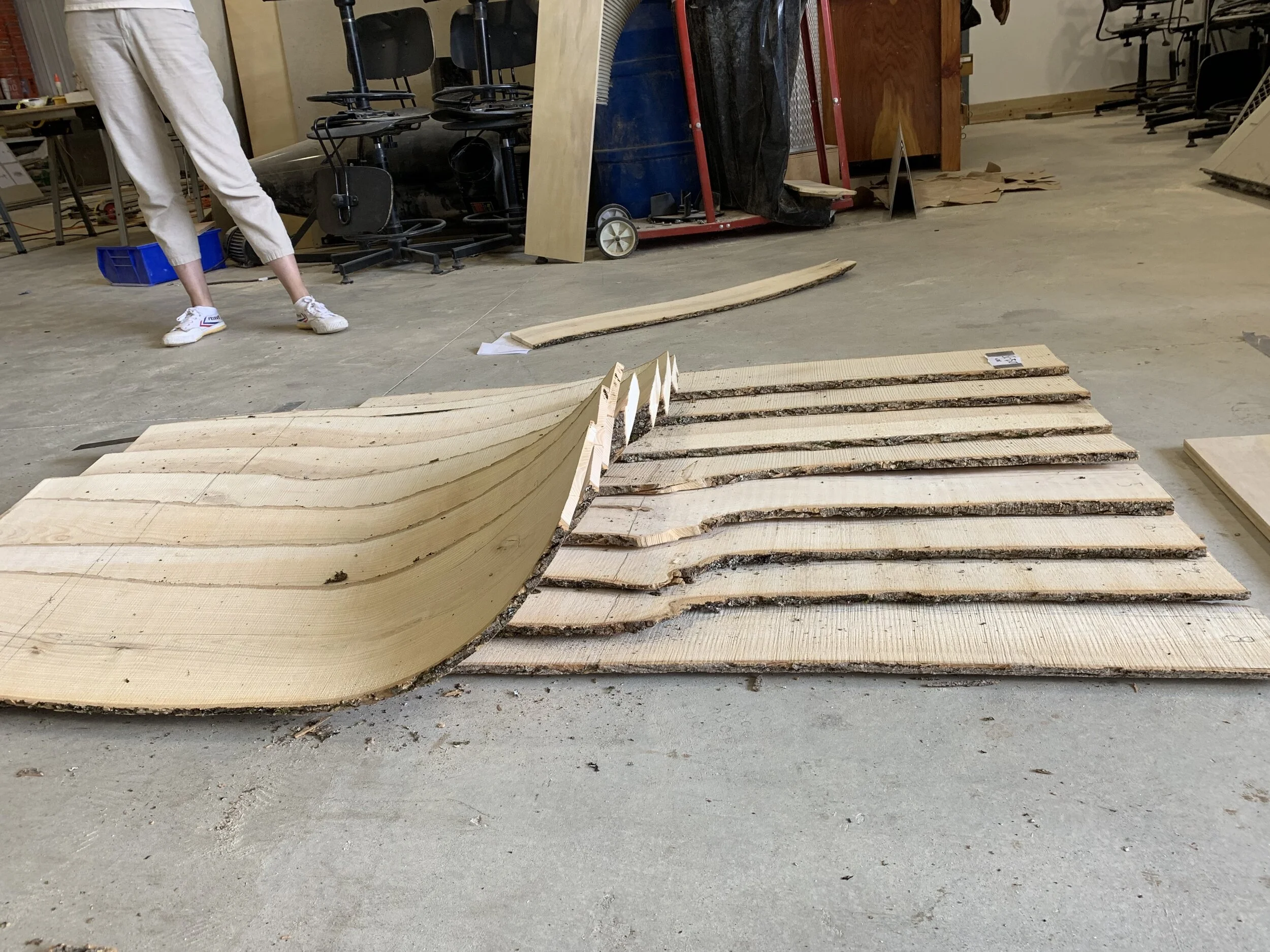





Roundwood
Strategy 2
Made from discarded timber, Log Knot is an infinitely looping, robotically fabricated architectural installation that provides a playful space for the campus community. Log Knot forms an interplay between archaic natural timber geometry, advanced computational structural optimization, and state-of-the art digital fabrication.
This project outlines processes and methodologies for robotic fabrication, variable complex-curvature creation, joinery detailing, geometric and structural optimization, the reduction of moisture-related material failures, and on-site assembly.

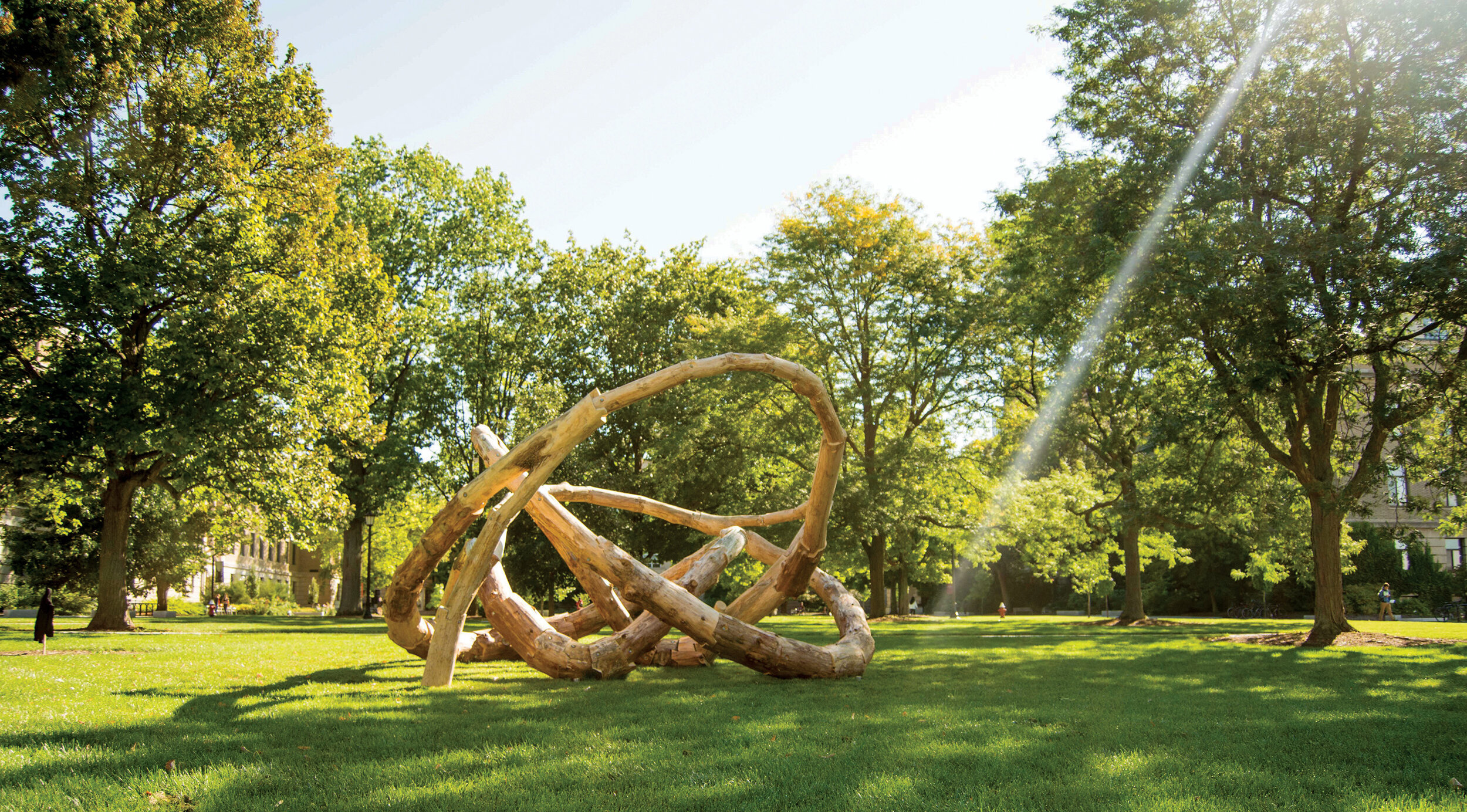

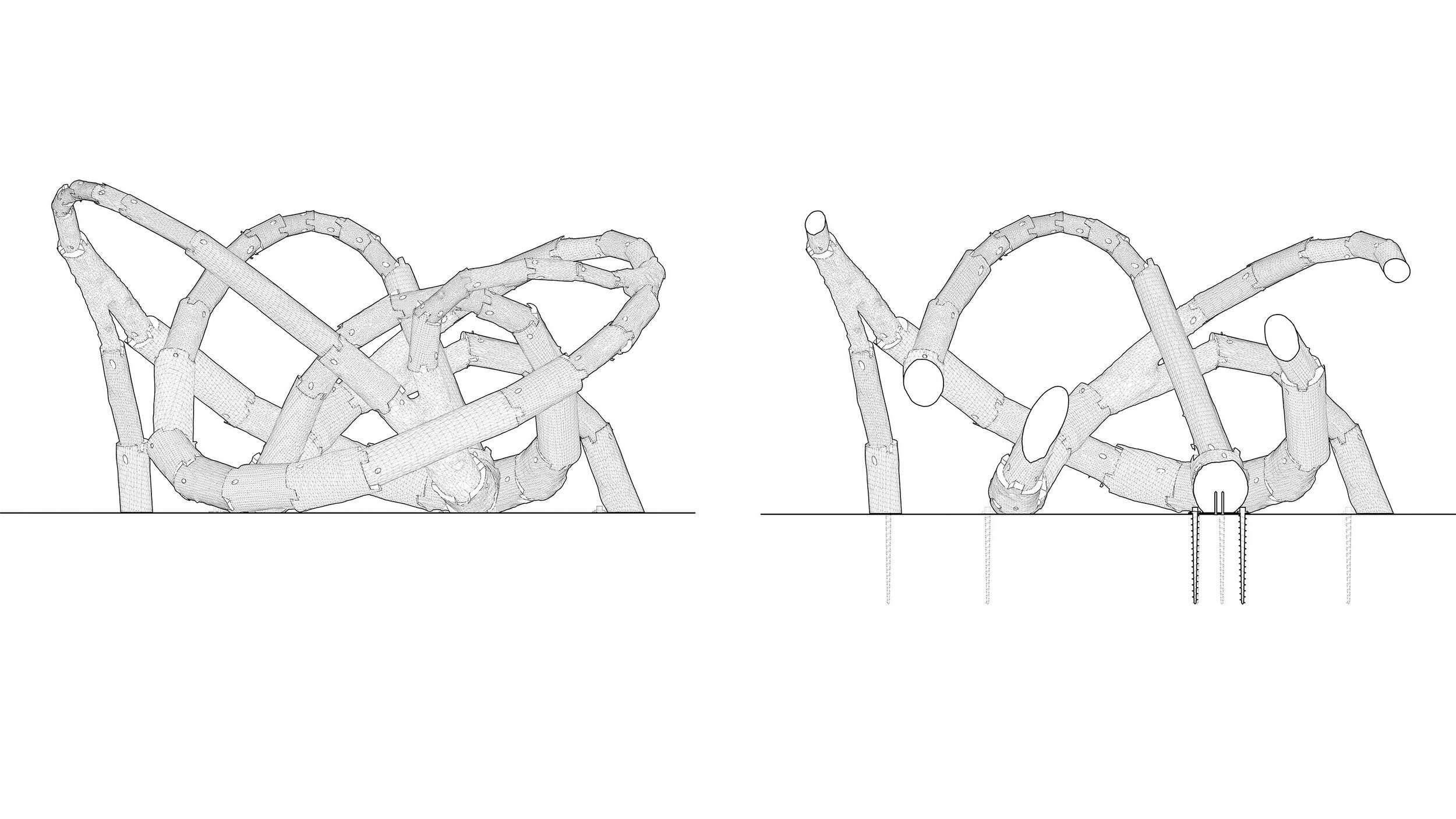



Tree Elements
Strategy 3
Timber De-Standardized is a framework that salvages irregular and regular shaped tree logs by utilizing a mixed reality (MR) interface for the design, fabrication, and assembly of a structurally viable tree log assembly.
With an embedded structural feedback loop, the process engages users through a direct, hands-on design approach to iteratively modify and design irregular log elements at full scale within an immersive MR environment without altering the original material.









Digital Logs
Strategy 4
The expanded notion of designing with discarded logs requires new tools and technologies. As a mixed reality (MR) user interface (UI), Timber De-Standardized’s Digital Log's custom UI enables professionals and non-professionals alike to seamlessly design with irregular logs using an intuitive MR environment. This methodology will extend the usability of MR UI protocols to a broader audience while democratizing design and enabling the user as a co-creator.








Long Kerfing
Strategy 5
UNLOG uses waste wood that is robotically sliced and playfully assembled into lightweight and unfolding structural components, stretching the limits of our architectural imagination – both literally and figuratively. UNLOG asks the question: How far can a single log be stretched – both literally as an assembly and figuratively as a valuable resource? In total, UNLOG is fabricated from 12 Emerald Ash Borer (EAB) infested logs with unique profiles, stretched to their limit and assembled on site.


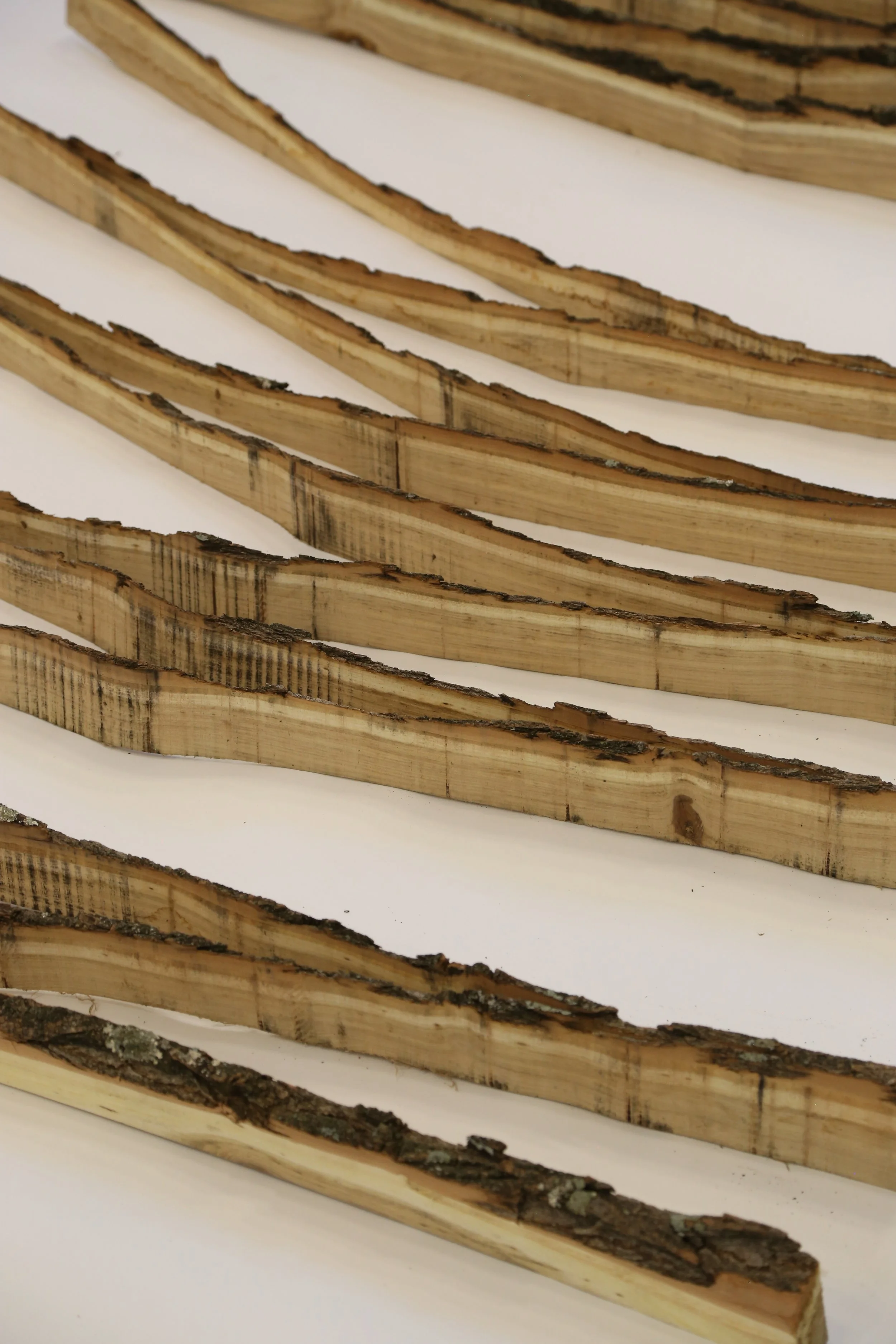



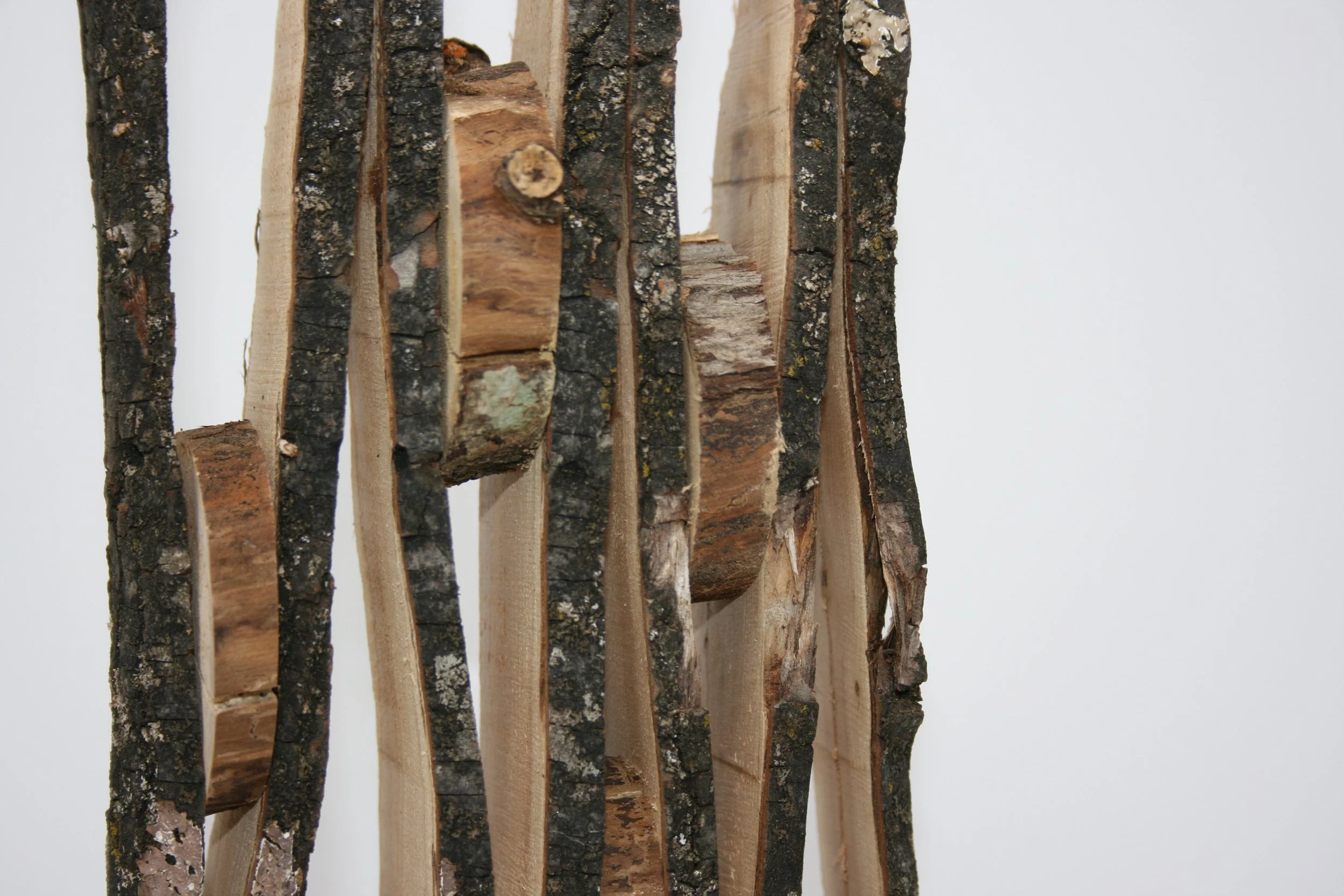

Cross Lamination
Strategy 6
This strategy upcycles non-standardized wood boards to create a customized structural wood system by using augmented-reality (AR) construction methods. A material exploration in cross-laminated timber (CLT), the installation introduces customized hollow voids enabled by computational technologies to reduce the total material used and to develop a digitally informed and customized hollow-core cross-laminated timber (HCCLT) wall assembly. Each upcycled element can be measured, cut to scale, and assembled with holographic guides within a mixed-reality environment.






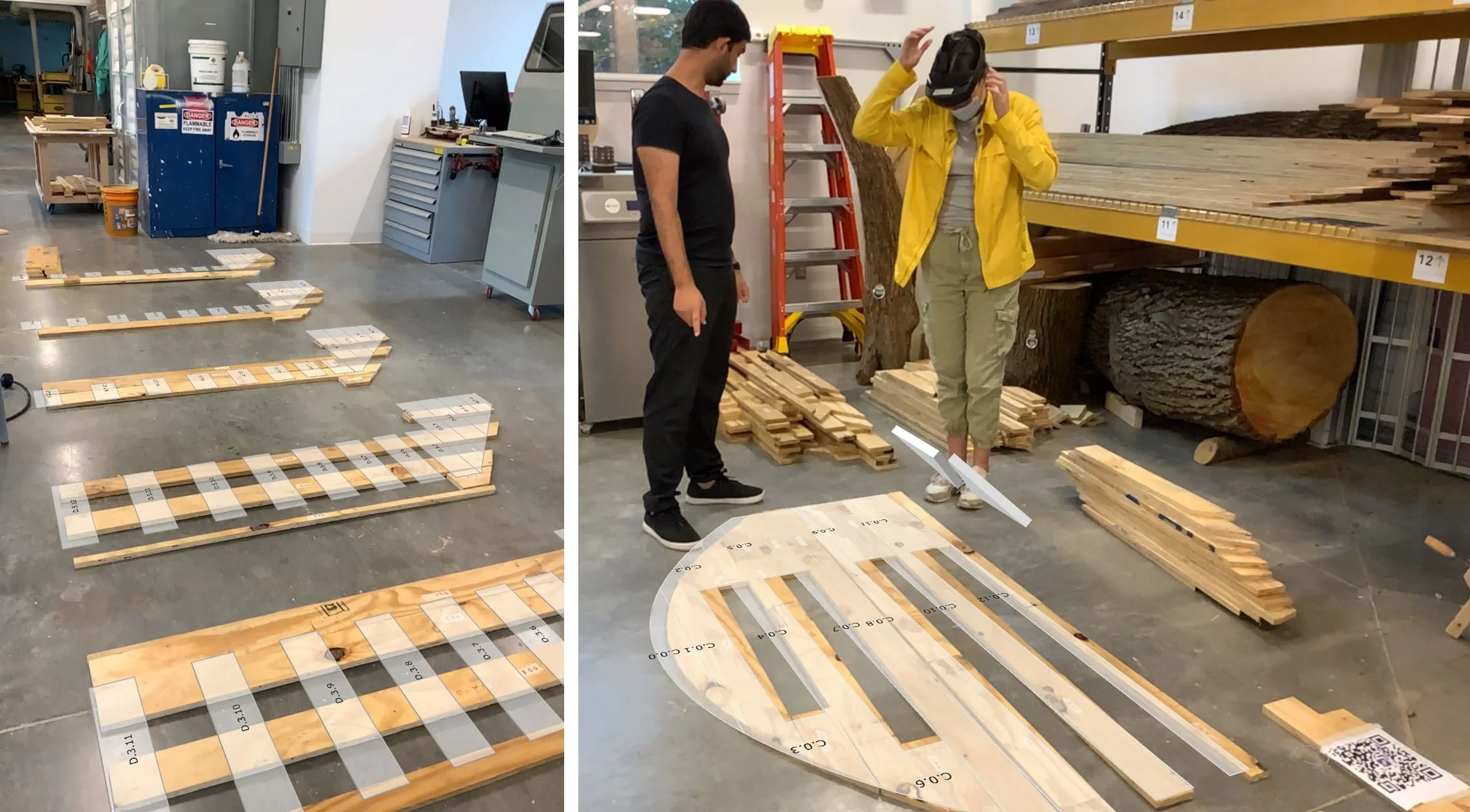

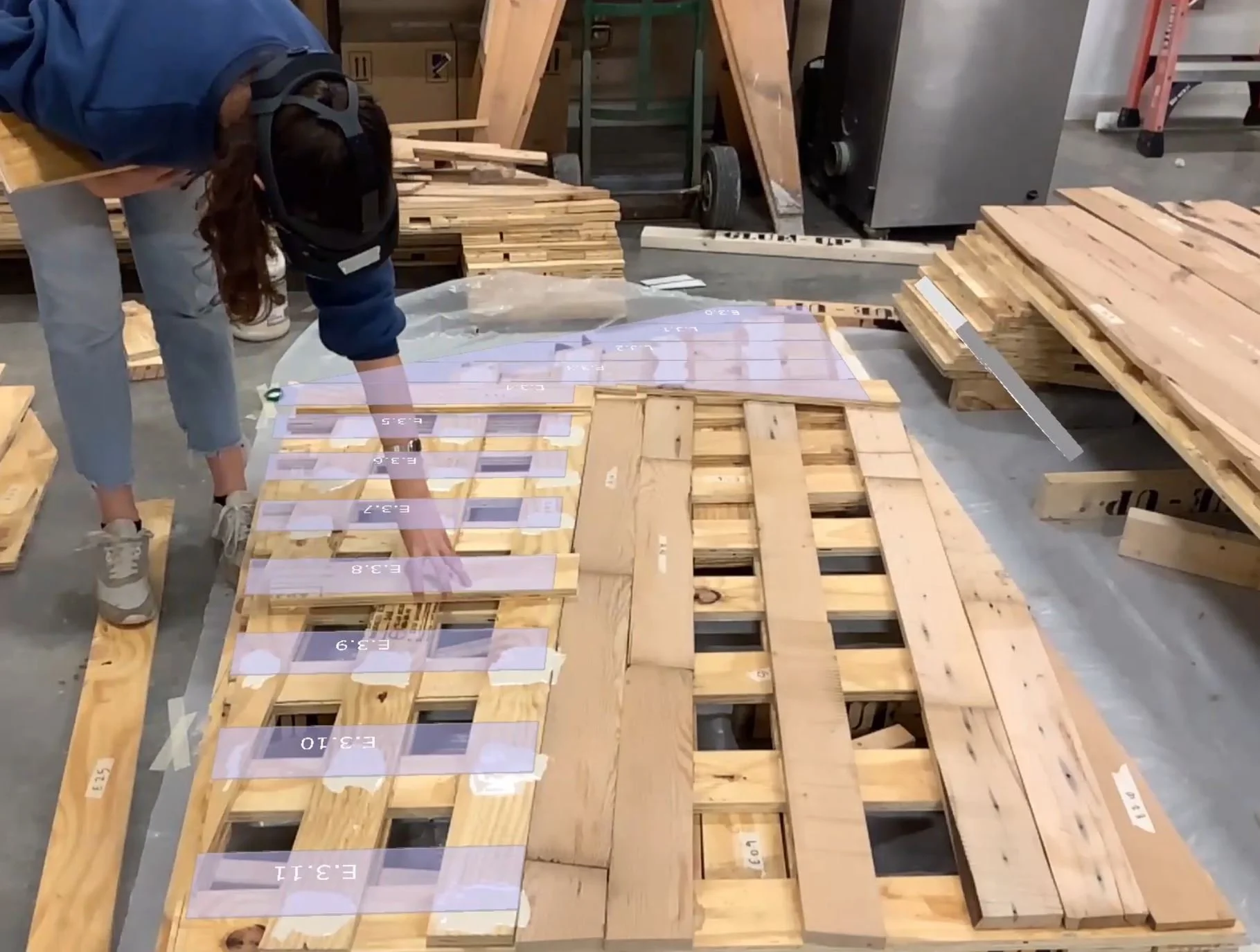
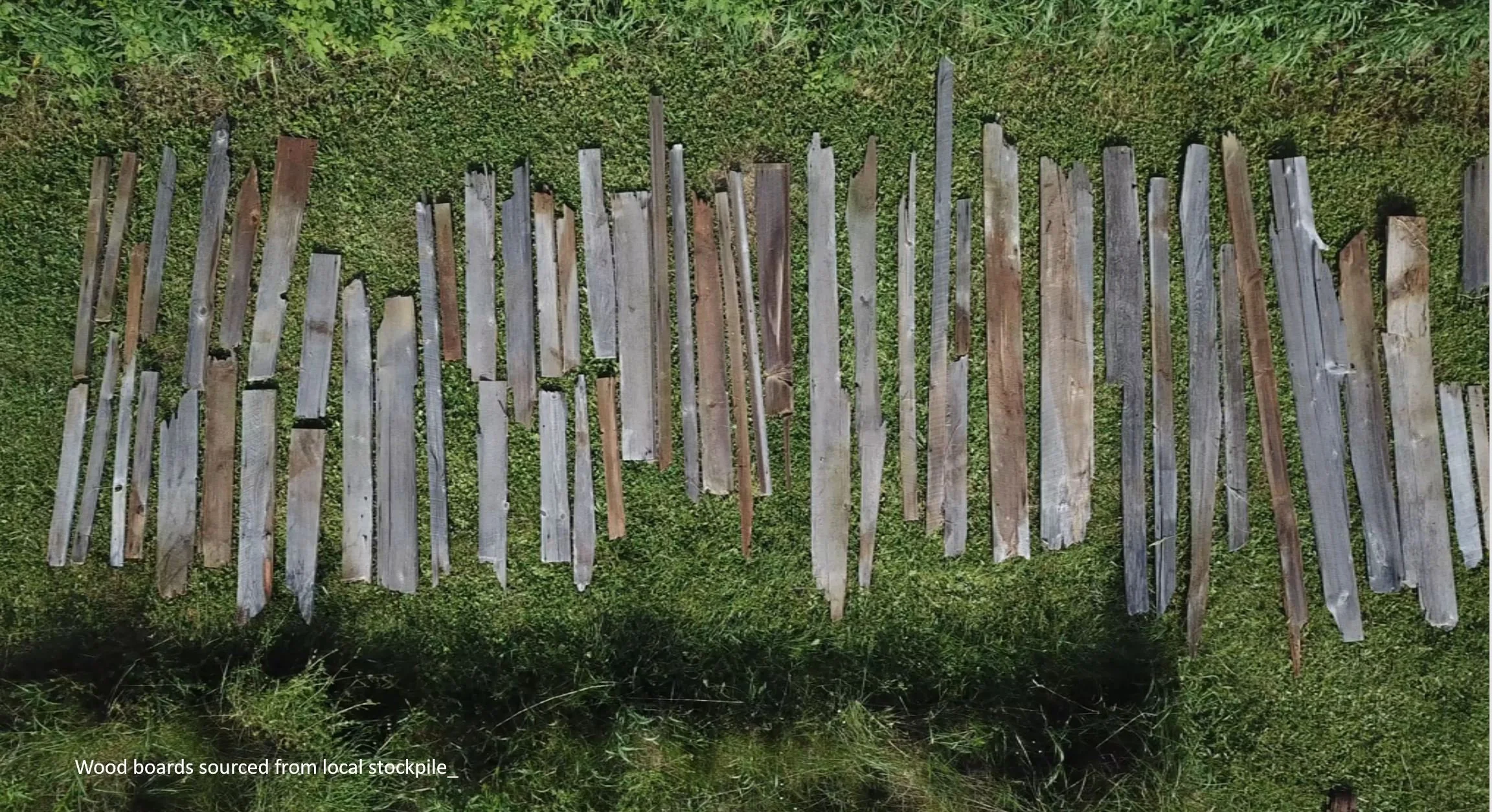
This website is made possible by the New York State Council on the Arts with the support of the Office of the Governor and the New York State Legislature.
Copyright © 2022 HANNAH Design Office LLC, www.hannah-office.org
Work and research shown on this website is supported by:





